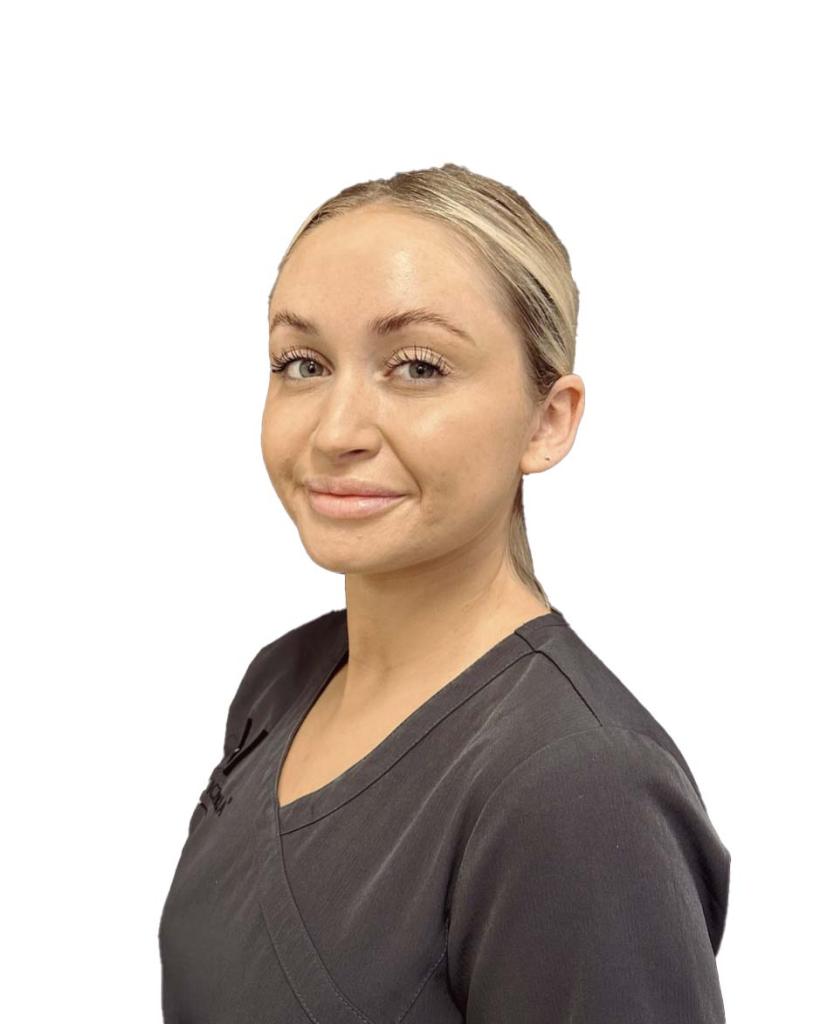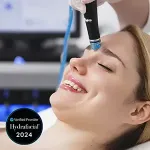The Scottish summer – we never know when the sun will make an appearance, but when it does, we know how to make the most of it! Heading straight to the beach, dining al fresco, and enjoying cocktails until the sun sets. But you know, it is possible to have too much of a good thing.
Especially when all these outdoor activities leave a lasting impression on your skin. If your post-summer skin is showing signs of needing a little TLC, I’m here to help you get back what too much fun in the sun has taken away.
Summer skin health hazards
We Scots aren’t exactly the best when it comes to applying sun protection. All too often I see people neglecting sun cream completely during “Taps aff” season resulting in painful sunburn and I worry about the long-term consequences for their skin health.
Prolonged sun exposure can result in uneven skin tone and discolouration caused by post-inflammatory hyperpigmentation. It can also lead to melasma, a skin condition characterised by brown or greyish patches on the face, which can worsen with sun exposure.
It can also cause sunspots, which are flat, brown spots that appear on sun-exposed areas such as the face, hands, shoulders and arms. And we’re all now well aware that prolonged sun exposure can cause cancer, so there really is no excuse not to protect yourself.
Re-apply, re-apply, re-apply!
Even those who do remember to slather on the sun cream may not realise just how often you need to reapply it. As a general rule, if you’re outside you should be reapplying it at least every two hours, but if you’re sweating or swimming it needs to be re-applied even more frequently.
This will help to protect your skin from the sun’s UV radiation which accelerates the breakdown of collagen and elastin, causing wrinkles, fine lines, and loss of skin elasticity. Frequently re-applying your sun cream will also keep your skin moisturised, otherwise sun exposure and salty seawater will strip the skin of its natural oils, leading to dryness, flakiness, and a rough texture.
And I’m not just talking about the summer months. Sunscreen should be applied every single day of the year – rain or shine, even in Scotland.
The right product for the job
To get the most out of your sun protection, it’s important to find the right product for you. For example, if you suffer from a breakout-prone skin, you should avoid sunscreens that are ‘comedogenic’ as these can clog your pores and lead to blackheads and whiteheads.
Some people may also react to certain fragrances or preservatives within particular sunscreens. That’s why why speaking to a skin expert can help with recommendations for oil-free sprays that won’t clog your pores to tinted balms that add a healthy-looking glow, they’ll help you find your perfect match.
Seven Ways to Rejuvenate Post-summer Skin
Exfoliate dead summer skin
Exfoliating helps to remove dead cells from the surface of your skin, revealing brighter, smoother skin. You can do this to a certain extent at home by opting for a gentle cleansing scrub or using an exfoliating mitt in the shower. However for the best results, book in for a Hydrafacial® treatment which includes a chemical peel that contains salicylic and glycolic acid which helps to uncover a new layer of skin that looks fresher and brighter.
Hydrate dry summer skin
After a summer of sun, your skin needs hydration more than ever. So opt for a moisturiser that contains hyaluronic acid to deeply nourish and help retain moisture. The DRVICTORIA™ Ultra Hydrate is perfect for the job. This 4-in-1 hydration serum is lightweight and fast absorbing to instantly hydrate. In fact, it provides 72-hour hydration. It also has an improved cumulative effect with long-term use – fine lines smoothed, skin firmed, and a soft and supple complexion.
Repair summer pigmentation
Antioxidants such as vitamin C are fantastic for helping to repair sun damage, reduce pigmentation, and brighten your skin tone. I recommend the DRVICTORIA™ Vitamin C serum which helps reduce the free radicals that cause the visible pigmentation. If your skin is oily and prone to breakouts use the 10% serum, otherwise use the 20% serum.
I also highly recommend Illuminate from the DRVICTORIA™ range which is a specially formulated brightening serum designed to inhibit melanin synthesis, the main cause of pigmentation, leaving you with smoother, more even skin tone.
Treating sun damaged skin
Consider booking a course of professional skincare treatments for more intensive rejuvenation results. Treatments such as Microchannel Facials with Exosomes is a highly effective option for targeting issues such as melasma, pigmentation and redness. Laser and IPL can be used to target age spots. And the Hydrafacial® treatment can help to hydrate and accelerate skin repair.
Nourish your skin barrier
Eat a balanced nutritious diet that includes plenty of fatty fish such as salmon and tuna which are high in omega 3 acids, vitamin D, vitamin E and zinc – they plump the skin and also work as an anti-inflammatory. Avocados are also a great source of vitamin E which can potentially reduce UV damage to your skin. Finally, be sure to include some cocoa as it’s high in antioxidants, particularly flavanols which are great for the skin.
Exercise to improve circulation
Studies have shown that exercise can have an anti-ageing effect on your skin (Ref 1). That’s because movement improves blood circulation and helps to replace old and damaged skin cells with new, healthy ones. This can help reverse some of the changes that lead to visible signs of ageing such as loss of elasticity by improving the metabolism of your skin cells so they function better.
Protect your skin
Don’t let all your hard work go to waste. Summer may be coming to an end but you still need to continue using sunscreen daily, even in the autumn and winter, to help prevent further sun damage and maintain your skin’s health. With that in mind, stock up on the DRVICTORIA™ Safeguard SPF50. This broad spectrum sun cream contains a variety of filters to protect against the harmful effects of UV rays. Light and easily absorbed, with a natural tint, it will promote an even-looking appearance whilst hydrating and protecting.
Need a Little Skincare Help?
Unprotected sun-worshipping can leave your skin looking lack-lustre and feeling flaky. The real damage will have been done beneath your skin and will eventually become apparent in the coming months and years through accelerated skin ageing.
Which is why, before starting any treatment plan, I recommend an Observ 520X Skin Analysis to assess exactly what underlying skin issues my patient’s might have. That way I can create a completely personalised treatment plan for you, to target your key skin concerns and address any underlying issues, and ensure you get the best results from your post-summer skin recovery journey.
Author's experience
Aesthetician Rachael is qualified in advanced skin treatments including skin analysis, Hydrafacial, microneedling, radiofrequency skin tightening and chemical peels. She has a special interest in acne prone and pigmented skins.
Reference and resource links
- The Anatomical Society: Exercise-stimulated interleukin-15 is controlled by AMPK and regulates skin metabolism and aging, Crane, MacNeil, Lally, Ford, Bujak, Brar, Kemp, Raha, Steinberg, and Tarnopolsky, 2015
- British Association of Dermatologists: The sun protection fact sheet, 2024
- Harvard Health: Sun damaged skin, LeWine, 2023
- UK Health Security Agency: Solar radiation and public health, 2023
- Professional Beauty: After sun – treating pigmentation, 2018




